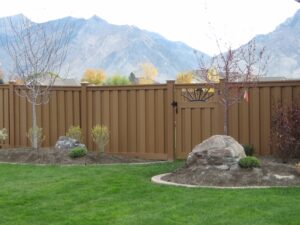
If there’s one thing that sets Coloradoans on edge during the summer (and fall . . . and spring), it’s the danger of wildfire. It used to be that when one heard the word “wildfire” they pictured a forest fire deep in the mountains of Colorado. But as extreme drought has settled into our state, we have witnessed wildfires in places we never thought possible. Now we understand that urban wildfires are becoming more of a threat.
Residential fire mitigation is top of mind along the Colorado Front Range and homeowners are looking for smart tools to add to their fire mitigation toolbox.
The Changing Perspective on Wildfires
In 2012, the Waldo Canyon Fire in western Colorado Springs swept down the sides of the foothills into residential neighborhoods well outside of the forested hills above. The Marshall Fire in Boulder County in 2021 took everyone by surprise when it ripped through residential areas in December, of all months. The location and timing of that particular fire challenged what we all thought we knew about where wildfires can take place, and when.
Unfortunately, this very serious problem is not going away any time soon. Although many parts of Colorado have received moisture in the last month, drought conditions are still present. According to the National Weather Service U.S. Drought Monitor, as of August 11, 91.7 percent of Colorado is still experiencing abnormally dry to exceptional drought conditions. Specifically, 58.2 percent of Colorado is classified as moderate drought, 26.9 percent as severe drought, and 4.9 percent as extreme drought.
Fire Mitigation for Your Home Includes the Fencing
More and more homeowners along the Colorado Front Range are taking fire mitigation seriously and seeking ways to protect their property as best they can. Fire mitigation around a home typically includes removing or trimming trees close to the house; removing vegetation, pine needle beds, and weeds that settle around the home; replacing outdated roofing material; and ensuring dead, dry tinder is not present in the yard.
However, what many don’t think about, is their fence. What are most older fences made of? Wood, of course. Even if steps have been taken to mitigate fire risk in a yard, it could all be for nothing if a fire first reaches a wooden fence that then connects right up to the house. Frighteningly, a wooden fence can bring the fire straight to your house, and quickly.
Trex Fencing Completes a Residential Fire Mitigation Plan
A smart choice when considering fire mitigation around a house is Trex fencing. Trex fencing is made in the United States with 96% recycled content made up of plastic materials and reclaimed wood, and the company is one of the largest plastic recyclers in the world. Due to its plastic content, a Trex fence provides better protection than wood because it has a slower flame spread.
Trex is an especially great choice for fencing that stands in an open area close to fields, open space, or the base of the foothills. These areas are prone to high winds that can sweep fire quickly across the landscape.
Related Blog Post: Why Trex Fencing is a Sound Choice for Homeowners
Sometimes, homeowners with long lengths of fence line will utilize a combination of wood and Trex fencing. They might keep a wooden fence as the shared fence between their house and their neighbor but install the Trex fence for the “wing” areas, or the areas that go far out into a field.
Trex fencing is a choice that also makes sense from a longevity and durability standpoint. It’s an extremely durable product not vulnerable to insect damage or tough weather conditions, doesn’t require painting or staining, and comes with a 25-year warranty from the manufacturer.
Related Blog Post: Top 10 Questions About Trex Fencing
Trex Fencing Recommended by Fire Districts
Did you know you can have someone from your local fire district visit your home and advise where to place new fence for the best fire safety? It’s a helpful thing to do when planning for wildfire and potential fence options. You will find that metro fire districts advise the use of Trex fencing for fire mitigation.
With the extreme drought Colorado is facing, as well as urban wildfires becoming more of a threat, many homeowners are switching to Trex fences as part of their fire mitigation plans.
